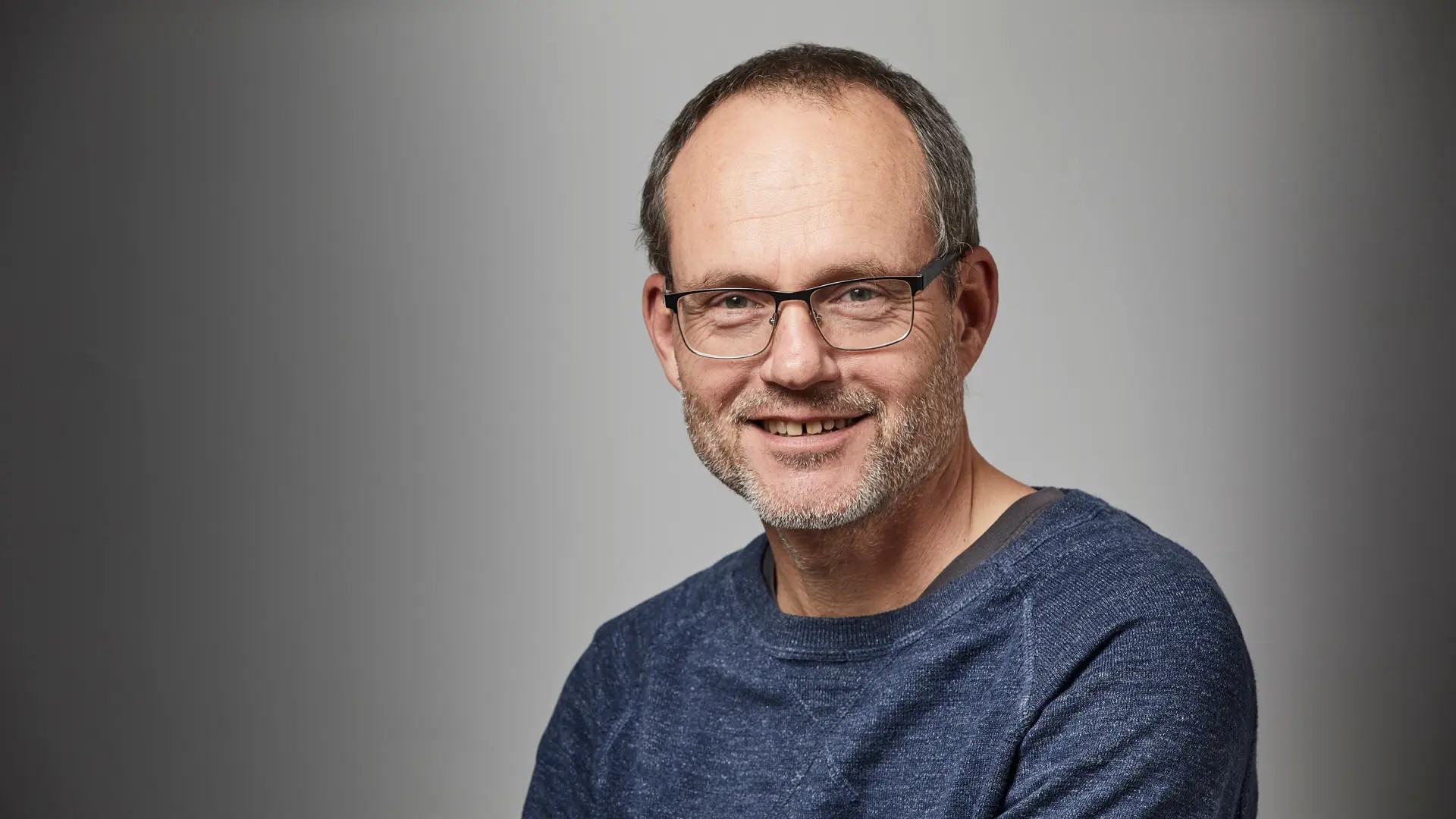
On a sunny Tuesday morning, I am waiting in front of Mikael Käll’s office. He appears just a minute later, casually dressed as usual. Mikael is professor in the Division of Bionanophotonics at the Department of Physics and one of the most successful physics researchers at Chalmers. He suggests a more inviting place for the interview and we settle down in one of the freshly furbished meeting rooms next to the physics' kitchen with a coffee in our hands.
When it comes to talking about his research, Mikael doesn’t need much encouragement. We speak about the history of the field of bionanophotonics that is very much weaved into his own professional development. It all started with his PhD studies in Raman scattering of high-temperature superconductors which he carried out in the condensed matter physics division. After having continued the research on superconductors during his post doc in the National Laboratory in Roskilde, Denmark, he comes to an important turning point in his career. Back at the Physics department at Chalmers in the late nineties, Mikael decides to take up a year of full-time studies in Biology, a subject he has always been fascinated by. In hindsight, this brave decision seems to have been exactly the right thing to do.
The biology studies inspire him to use his familiar method of Raman spectroscopy to look at individual biomolecules using silver nanoparticles as signal enhancing “antennas”. Based on these investigations, the research activity in nanoplasmonic sensing took off a couple of years later after discussions with fellow colleagues. Now, Mikael can call himself the head of the Division of Bionanophotonics that he founded exactly ten years ago. And those initial discussions on the topic left their traces elsewhere too. Just think of all the nanophotonics research activity that is nowadays going on in the physics department!
Helicopter view
In the background distant chatter arises, the kitchen seems to be getting busier, it’s time for the morning coffee break. I ask Mikael about the key factors for his academic success (an h-index of 54!). He hesitates, “that is a very difficult question.” After a pause, “I think success requires certain competences which I think I have” he says then, laughing. He believes that it is important to be good at expressing yourself, both in speech and writing. He describes himself as a person who can see the bigger perspective, “I have an helicopter view”. “And not at least”, he confesses, “I’ve had luck.”
Mikael is quiet when there is nothing to say but answers every question thoroughly and doesn’t lose track of his conclusions even when I digress. You realise quickly that Mikael is a focused person. And that seems to reflect itself in his way of working. Timur Shegai, assistant professor in Mikael’s division, points out his exceptional pedagogical style of writing scientific articles. “Everything Mikael writes is deep-thought and of high quality”, he says. Another part that Mikael is very involved in when it comes to the research in his group is the discussion of results. And this is something he genuinely enjoys, discussing anything, from research to politics.
Common denominators in physics and birdwatching
The clatter of plates and cups dominates in the background; someone must be emptying the dishwasher. It seems inevitable to spend almost half of our time talking about birds. When Mikael’s workday is finished he often dedicates his time to his “other big passion”: birding. He tells me that when he’s out travelling the world, looking at birds and guiding others, he doesn’t think about physics. Almost every day after work he spends some time bird watching along the coast near his home in Onsala. I can’t help being a bit impressed by someone having such a serious hobby.
It comes across as that for Mikael physics and birding are two passions that nurture each other. “If someone really does birdwatching to a level as Mikael, it does say something about the person and how that person is doing science”, Timur concludes quite to the point, as I think later. Physics and birdwatching seem to have many features in common. “Both require role models”, Mikael points out. In fact, his interest in research probably arose from that he has met many role models in ornithology, a field where amateur science has largely contributed to the professional research. His interest in both fields seems to be driven by a curiosity to discover new things on the boundaries of what he already knows. Be that new species of exotic birds and their behaviour, or novel proof-of-principle findings in nanophysics. Also, both of his passions require commitment. After all, both in his physics research and in birding, the joy of discovery, being part of a community and competition are important momenta. I can only imagine the many pages long list of the bird species Mikael has seen in his life.
What’s next?
The remaining coffee in my mug is cold by now. We talk about research strategies on a departmental and university level as Mikael is also in charge of research infrastructure and quality of research as deputy head of the Department of Physics. This is a role that seems very much suited for a person like Mikael with his strength for keeping an overview of things. He enjoys thinking of up-to-date strategies to succeed in the internationally competitive arena of science. One example is the establishment of infrastructures like the Chalmers Materials Analysis lab, which he has been leading.
“So what is next?” I ask. And unintentionally this seems to be one of the harder questions. After some consideration he says that he wants to stay in the field of nanooptics, which is offering some new prospects to follow. But he doesn’t exclude the possibility of going into other directions. “The important thing is that it is something where I can learn something new myself.”